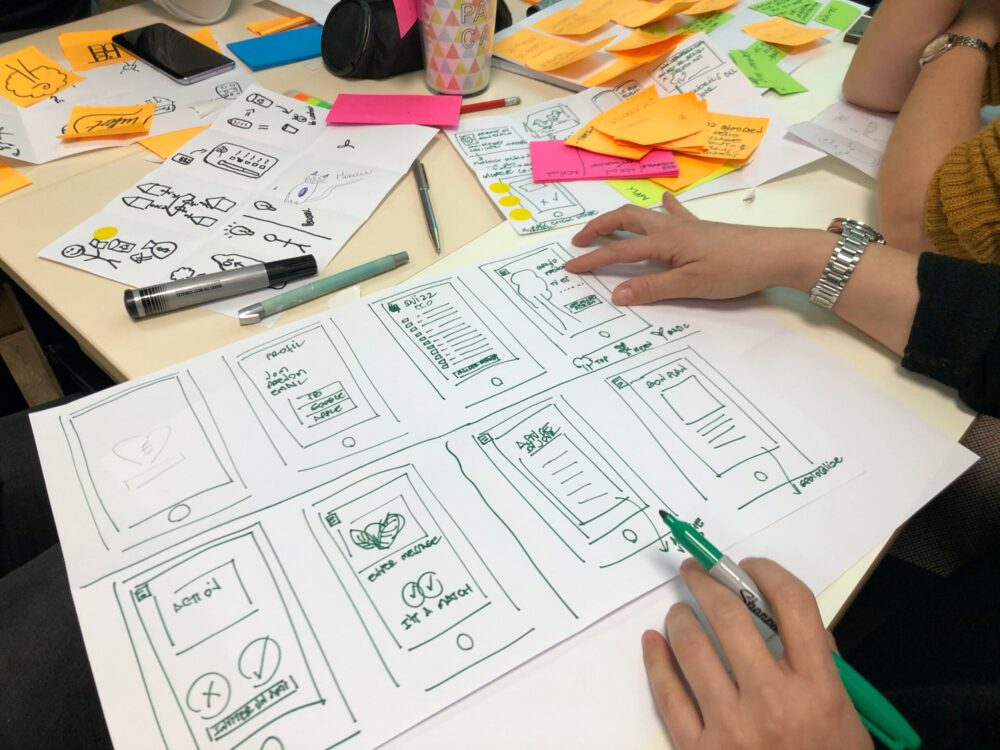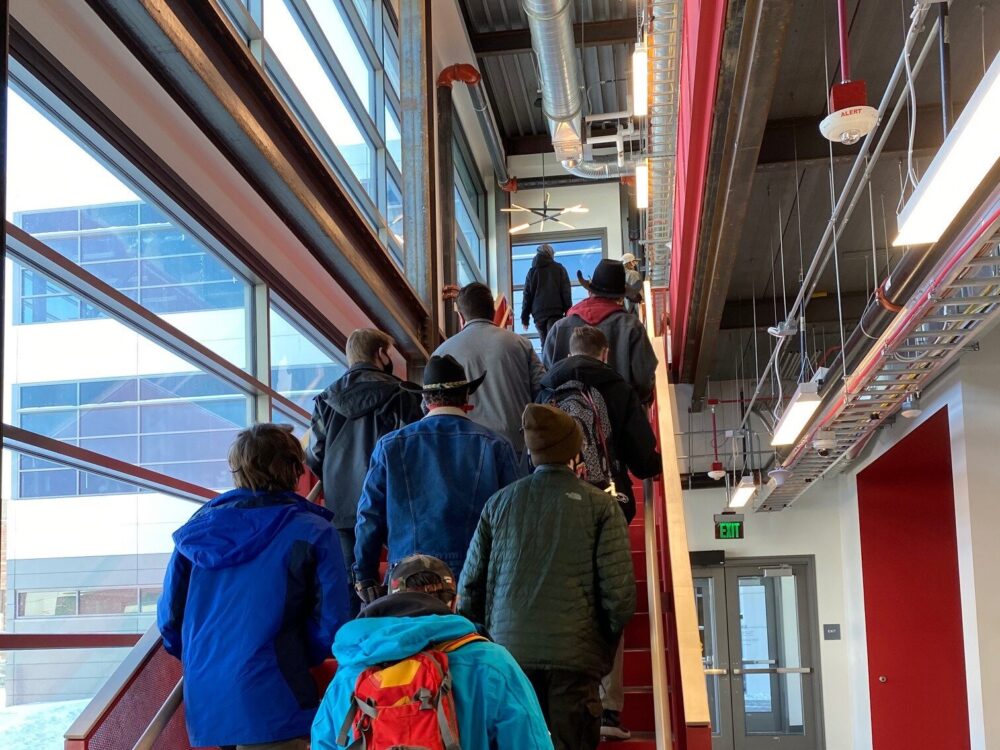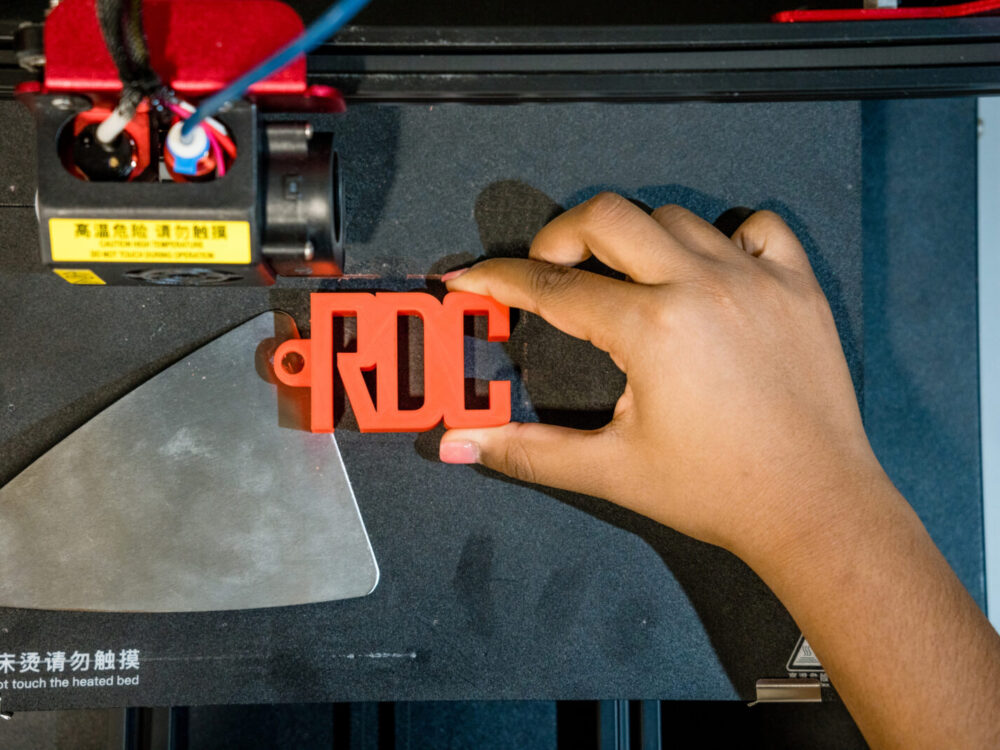Empower your students. Elevate your school. Create the next generation of design thinkers.
Over 30 Colorado K-12 school districts are providing CSU dual enrollment opportunities to their high school students. Become an integral part of your student’s journey to become workforce innovators within their desired vocation.
Interested in bringing design thinking to your classroom? Reach out to the RDC Dual Enrollment Coordinator to begin reviewing dual enrollment course offerings, delivery options, and help guide you through successful implementation. CSU Extended Campus will then assist with establishing a formal MOU and discussing payment options.
Accessible and collaborative learning RDC Dual Enrollment Course Offerings
IDEA 110: Design Your Life With Social Impact
(AUCC 3C/GT-SS3) An introspective course that will encourage students to reflect on their own interests and viewpoints to design a personalized approach toward building fulfilling life experiences.
Students will explore best practices for building self-awareness, being open to diverse perspectives, gaining confidence to reframe problems as opportunities, and developing a “whole human” life view.
Credits: 3
Prerequisite: None
Terms Offered: Fall, Spring, Summer
Additional Information: Social & Behavioral Sciences (AUCC 3C), Human Behavior, Culture, or Social Frameworks (GT-SS3).
IDEA 210: Introduction to Design Thinking
(AUCC 3B/GT-AH1) A comprehensive and adaptable project-based course that immerses students in the real-world to tackle contemporary problems through a unique blend of theory and practical application.
Students will work in teams on a project of their choice to strengthen creative competence, develop an appreciation for interdisciplinary collaboration, and learn best practices for delivering impactful ideas.
Credits: 3
Prerequisite: None
Semester: Fall, Spring, Summer
Additional Information: Arts & Humanities (AUCC 3B), Arts & Expression (GT-AH1).
Want to learn more? Frequently Asked Questions
How are the courses delivered?
Schools may choose from one (or more) of three option. An MOU on file is required for all delivery options. This will be discussed when you talk with our team.
- Individual – School does not provide space or teacher. Students sign up and take the course on their own time and schedule.
- Supervised – School provides space or support, but students complete the coursework largely on their own time and schedule. This is a great option for schools with limited teacher resources.
- Facilitated – Teacher facilitates the course through scheduled class time and guides students through material. Teachers do not need to be credentialed.
Do courses count for high school and college credit?
This depends on the school’s preference. It will be discussed when you talk with our team and create the MOU.
Do teachers have to have the credentialing to participate in the facilitated model?
No, all grades and teaching is done through CSU faculty. Teachers are there to guide and facilitate learning done online.
How do students pay for the course?
Schools can decide to pay the dual enrollment fee on behalf of the student or have students pay for it themselves. This will be discussed when you talk with our team and create the MOU.
Can students use COF (Colorado Opportunity Fund) for these courses?
No, these courses are not COF eligible.
Can an individual student sign up to take a course for the dual enrollment price not through their school?
Unfortunately, no. In order for a student to take the course, their school must have an MOU on file.
Who do I contact for more information?
Please email Design_EarlyCollege@colostate.edu to speak with a program coordinator.







